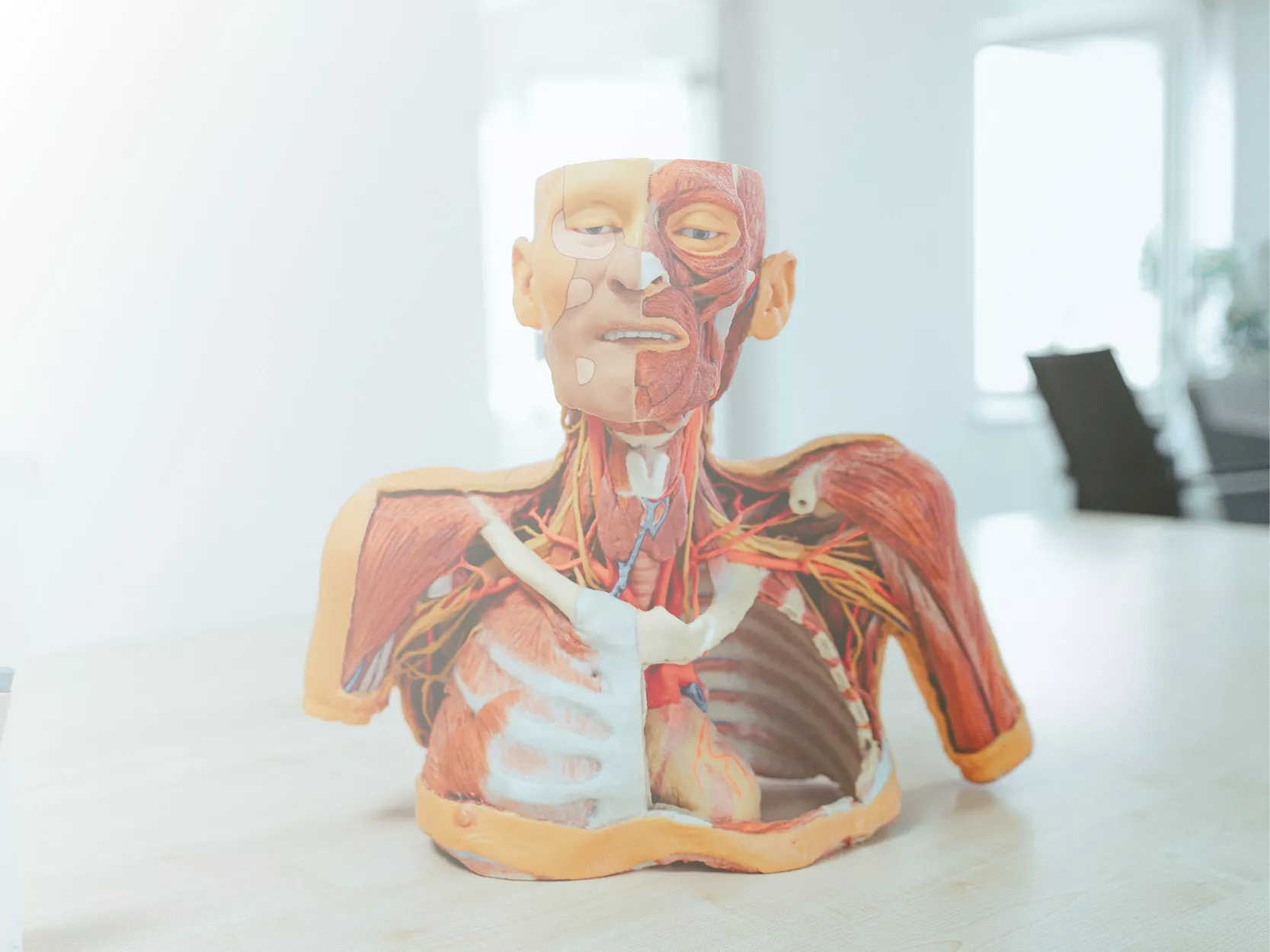Produktinformationen "Intracerebral Haemorrhage"
Klinische Vorgeschichte
Ein 80-jähriger Mann verlor plötzlich das Bewusstsein. Bei der Untersuchung zeigten sich eine Blickparese nach rechts, eine linksseitige Hemiplegie und eine rechtsseitige Hemiparese.
Pathologie
Koronarschnitte auf Höhe der Mamillarkörper, mit Hirnstamm und vorderen Temporallappen, zeigen ein massives Hämatom, das das Gewebe in den linken Basalganglien und der Capsula interna ersetzt. Die Blutung rupturierte in den linken Seitenventrikel und dessen temporalen Horn, zerstörte die Wand und infiltrierte benachbartes Hirngewebe. Auch der rechte Seitenventrikel ist mit Blut gefüllt, besitzt jedoch intakte Wände. Das Hämatom wirkt raumfordernd, dehnt die linke Hemisphäre und verlagert die Mittellinie nach rechts. Eine erkennbare subfalkine Herniation des linken Gyrus cinguli unterhalb der Falx cerebri ist vorhanden.
Weitere Informationen
Diese Form der intrazerebralen Blutung entsteht meist durch systemische Hypertonie. Sie entsteht durch Ruptur eines Mikroaneurysmas von Ästen der Striatalarterien, die die Basalganglien versorgen.
Ein 80-jähriger Mann verlor plötzlich das Bewusstsein. Bei der Untersuchung zeigten sich eine Blickparese nach rechts, eine linksseitige Hemiplegie und eine rechtsseitige Hemiparese.
Pathologie
Koronarschnitte auf Höhe der Mamillarkörper, mit Hirnstamm und vorderen Temporallappen, zeigen ein massives Hämatom, das das Gewebe in den linken Basalganglien und der Capsula interna ersetzt. Die Blutung rupturierte in den linken Seitenventrikel und dessen temporalen Horn, zerstörte die Wand und infiltrierte benachbartes Hirngewebe. Auch der rechte Seitenventrikel ist mit Blut gefüllt, besitzt jedoch intakte Wände. Das Hämatom wirkt raumfordernd, dehnt die linke Hemisphäre und verlagert die Mittellinie nach rechts. Eine erkennbare subfalkine Herniation des linken Gyrus cinguli unterhalb der Falx cerebri ist vorhanden.
Weitere Informationen
Diese Form der intrazerebralen Blutung entsteht meist durch systemische Hypertonie. Sie entsteht durch Ruptur eines Mikroaneurysmas von Ästen der Striatalarterien, die die Basalganglien versorgen.
Erler-Zimmer
Erler-Zimmer GmbH & Co.KG
Hauptstrasse 27
77886 Lauf
Germany
info@erler-zimmer.de
Achtung! Medizinisches Ausbildungsmaterial, kein Spielzeug. Nicht geeignet für Personen unter 14 Jahren.
Attention! Medical training material, not a toy. Not suitable for persons under 14 years of age.





































